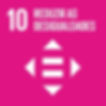Cotton for a Better Future Project
- Fundação RESET
- Feb 27, 2024
- 3 min read
Updated: Mar 14

The Cotton for a Better Future project, implemented by Sociedade Algodoeira do Niassa (SAN-JFS RESET), with the RESET Foundation, and supported by Cotton Made in Africa (CmiA), aims to improve education and access to clean water in rural Mozambique. Focused on the Khomane Village, Cuamba District, Niassa Province, the initiative enhances school infrastructure, sanitation, and water supply, benefiting both students and the broader community. The project directly impacts 510 students and 3,500 residents, contributing to long-term sustainability and rural development.
With a financial contribution of 75,000 Euros from Mrs. Christl Otto from the Aid by Trade Foundation - CmiA community cooperation program (CCCP), SAN-JFS RESET's investment in Khomane school is benefiting 430 male and female students and around 3,500 residents in the village of Khomane.
Most rural areas of Cuamba and Niassa province have difficult access to water and other basic services. In terms of education, there are high levels of illiteracy, particularly among girls and women. Most of the existing schools are built with local materials, as is the example of the Khomane primary school, 23 km from the village of Cuamba. Unfortunately, the region's school infrastructures present precarious facilities and insufficient lighting for teaching and learning, with classes canceled on rainy days, and many difficulties in attracting and retaining students and teachers, resulting in high levels of of school dropout.
As part of its social responsibility, JFS-RESET and the RESET Foundation, in partnership with the community, designed and implemented an integrated intervention focusing on access to education and water at the Khomane school, with the aim of contributing to improving the quality of education, to reduce school dropout rates and illiteracy.
The work began in September 2023 and on February 20, 2024, the opening of the new school and fountain was formally celebrated with the participation and handover of the authorities of the Khomane community. The project had several areas of structural intervention, including the electrification of the school through solar panels, the construction of 2 conventional classrooms, construction of an administrative block, a water supply system (public fountain), toilets and a playground. The project also included a school production component, with the opening of a vegetable garden for the cultivation of fruits and vegetables and a community farm for cotton production.
Key Findings
1. School Infrastructure and Educational Outcomes
The project constructed and electrified a modern school facility, including two classrooms, an administration block, four gender-segregated toilets with handwashing stations, a playground, and solar-powered electricity. Since the school’s inauguration in February 2024, enrollment increased from 422 to 510 students, with a significant 29.3% rise in female students. Improved infrastructure and access to clean water are expected to enhance school attendance, particularly during the rainy season, and boost academic performance.
2. Community Water Access and Health Benefits
A new borehole now provides safe drinking water to approximately 3,500 residents, including 310 cotton-growing families. Previously, Khomane village suffered from severe water shortages, impacting health, hygiene, and education. Access to clean water has significantly reduced waterborne diseases, improved sanitation at the school, and alleviated the burden on women and girls, who traditionally spent long hours fetching water.
3. Sustainability and Economic Empowerment
To ensure long-term sustainability, the project introduced a school garden with drip irrigation, which will provide food, nutrition, and income generation opportunities for students and families. The community is also encouraged to cultivate cotton fields, with revenues allocated for school and borehole maintenance. Additionally, training programs have been launched to strengthen school management committees, water resource governance, and sustainable agricultural practices.
It is also expected that the school garden will have a positive impact on the nutrition of students and that the sale of cotton produced in the community Machamba will complement the community's monetary contributions for the maintenance of the fountain and school infrastructure in the long term.
The Cotton for a Better Future project demonstrates how education, clean water, and community-driven sustainability efforts can drive rural development. By investing in school infrastructure, water access, and economic opportunities, the initiative fosters improved learning conditions, gender equality, and community well-being. Expanding such projects across Mozambique could further enhance educational outcomes and resilience in cotton-growing communities.
The Bibliography source:
RESET Foundation is committed with the The Sustainable Development Goals (SDGs). The Cotton for a Better Future Project is linked to several SDGs:








The SDG'sG's, also known as the Global Goals, were adopted by the United Nations in 2015 as a universal call to action to end poverty, protect the planet, and ensure that by 2030 all people enjoy peace and prosperity.

